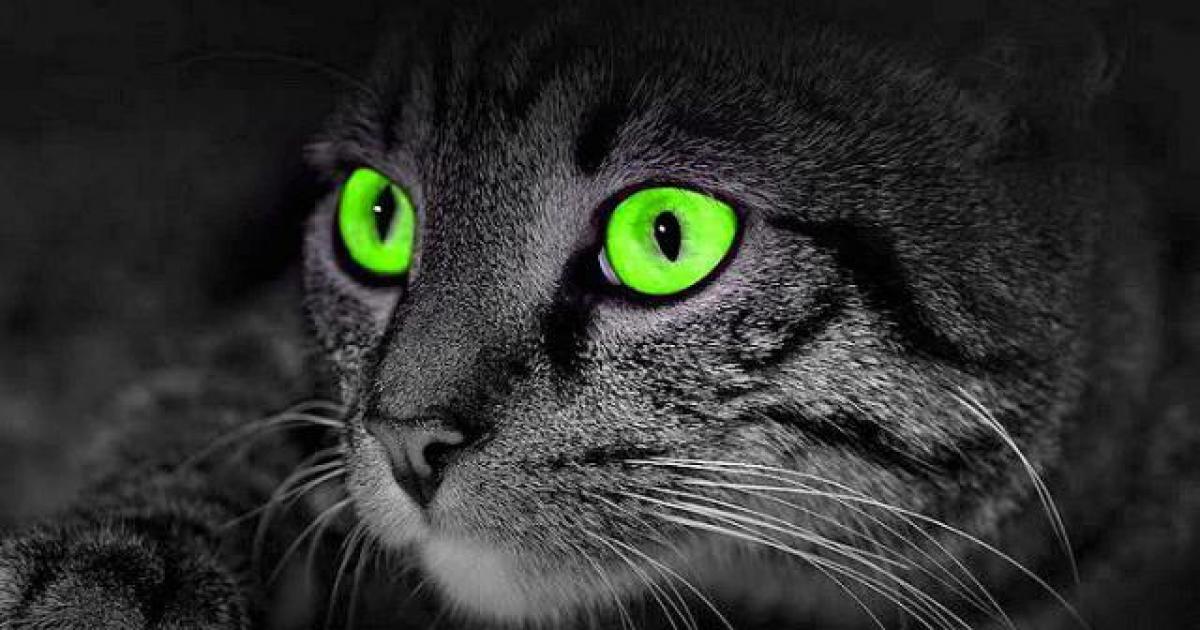A number of fake news websites dedicated to spiritual topics, holistic health and conspiracy theories push a fake but somewhat convincing narrative that cats and dogs can see spirits because they can see ultraviolet light
However, there is no data that suggests any animal can see beings made of light, and there’s a really easy way to prove it — with ultraviolet goggles.
The narrative of cats seeing spirits started after popular science sites like Live Science published articles discussing a research paper regarding ultraviolet light in mammals that suggest cats could see ultraviolet light. There’s just one problem: the study which Live Science mentions doesn’t say anything about proof of seeing light beings at all. That didn’t stop sites like The Mind Unleashed and Disclose TV from speculating about seeing spirits and running with it.
The study, published in 2014, concludes that some mammals can see UV light because of the way their lenses are shaped and structured.
We examined lenses of 38 mammalian species from 25 families in nine orders and observed large diversity in the degree of short-wavelength transmission. All species whose lenses removed short wavelengths had retinae specialized for high spatial resolution and relatively high cone numbers, suggesting that UV removal is primarily linked to increased acuity. Other mammals, however, such as hedgehogs, dogs, cats, ferrets and okapis had lenses transmitting significant amounts of UVA (315–400 nm), suggesting that they will be UV-sensitive even without a specific UV visual pigment.
A search through the study, however, does not suggest that it can see ghosts, or even any sort of light beings at all.
The simple truth is that if these UV light empowered mammals could see some sort of beings made of light that humans can’t, then all it would take for a human to confirm the existence of these beings would be to wear UV goggles or capture video with UV cameras. Alas, the fact that this hasn’t happened means these websites are simply pushing an exciting narrative to get you to click and make them some money.
UV Light In Mammals: The Actual Science
Just because there’s no evidence of cats seeing ghosts doesn’t mean the science isn’t still pretty cool! And it doesn’t mean cats don’t see things that we can’t. At least in terms of how much of a light range from the electromagnetic spectrum they can see versus that of humans, the research suggests that some mammals can in fact see UV light, which allows them to “see in the dark” despite having some trouble seeing in brighter daylight the way humans can.
As one paper from biologists R. H. Douglas and G. Jeffery at the Royal Society of Biological sciences says, although ultraviolet sensitivity is widespread among the animal kingdom, it is still considered very rare in mammals, being restricted to just a few species which have a visual pigment maximally sensitive below 400 nanometers. However, it also says that even animals without such a pigment will be UV-sensitive if they have ocular media that transmit these wavelengths, as all visual pigments absorb significant amounts of ultraviolet light if the energy level is sufficient enough to allow it.
The researchers also showed us that hooded seals native to the Arctic Ocean and North Atlantic have eyes that are extremely sensitive to ultraviolet light. This allows the seals to actually spot polar bears hiding in the snow as UV is reflected by snow and ice but absorbed by the bears’ white fur.



